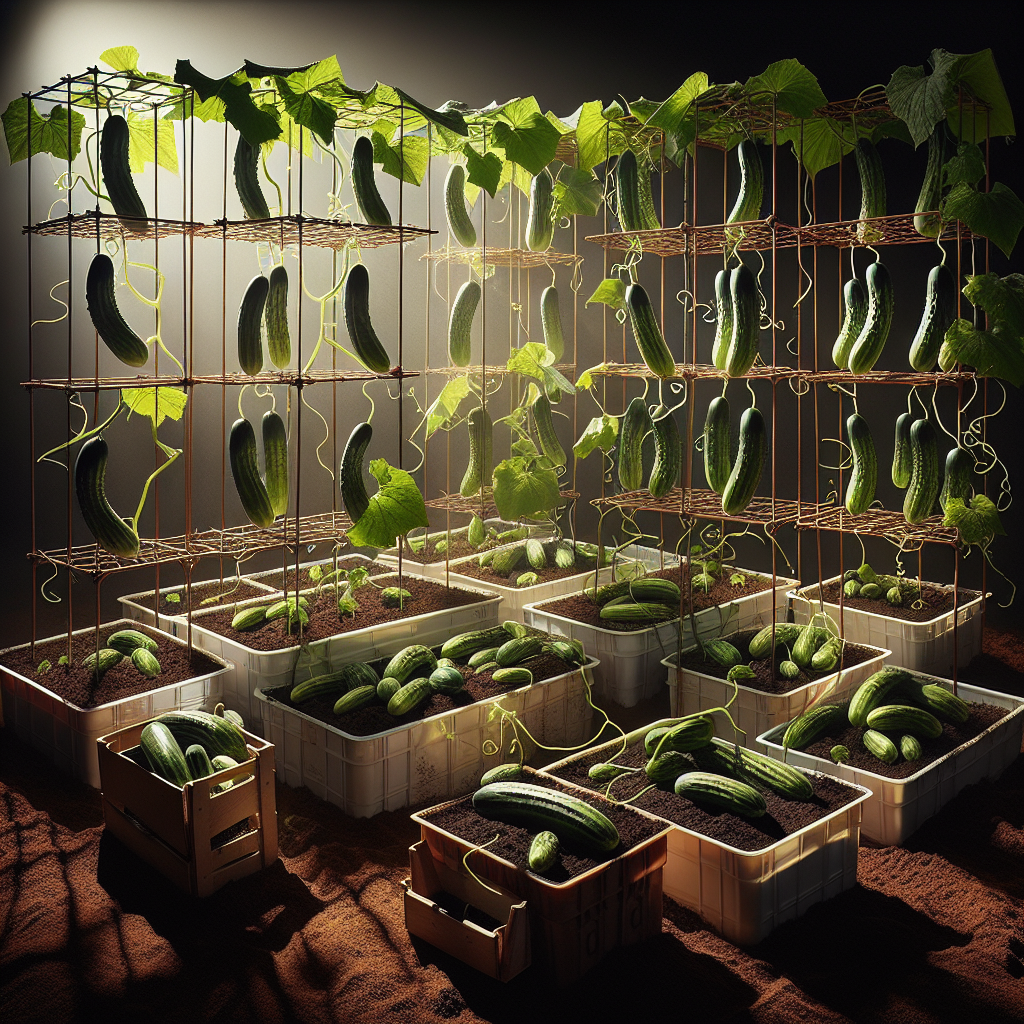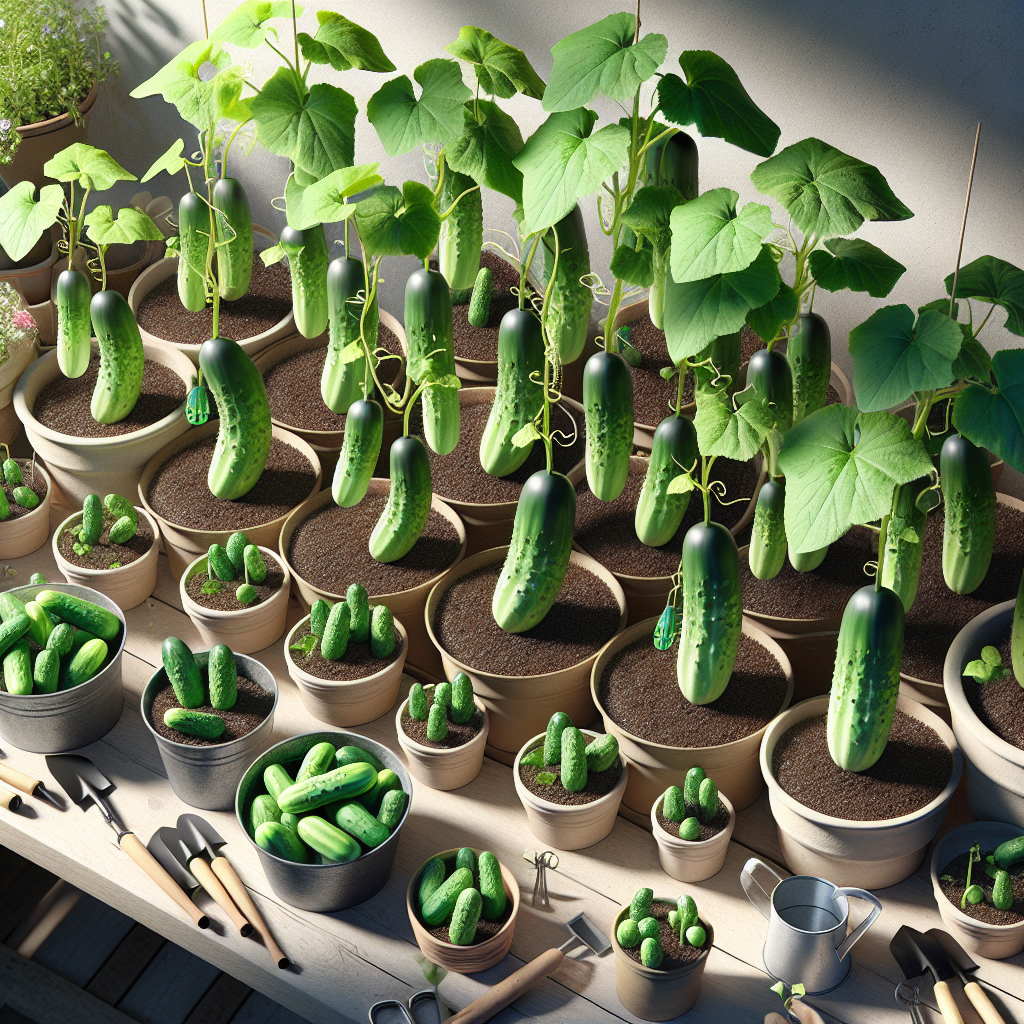Maximizing Cucumber Harvest: Growing Cucumbers in Containers
Cucumbers are a popular and versatile vegetable that can be enjoyed in salads, sandwiches, pickles, and even as a refreshing addition to drinks. While they are typically grown in the ground, growing cucumbers in containers is a great option for those with limited space or wanting to maximize their harvest. In this article, we will explore the benefits of growing cucumbers in containers and provide tips for successfully doing so.
Benefits of Growing Cucumbers in Containers:
1. Space Efficiency: One of the biggest advantages of container gardening is that it allows you to grow plants even if you don’t have a large garden or yard. By growing cucumbers in containers, you can make use of balconies, patios, or even windowsills to cultivate your own fresh produce.
2. Better Control: Container gardening enables you to have more control over the growing conditions of your plants. You can choose the ideal soil type and composition tailored specifically for cucumber growth. Additionally, container gardening allows you to control sun exposure by easily moving containers around depending on sunlight availability.
3. Disease Prevention: Container gardening also provides better disease prevention compared to traditional ground planting. Soil-borne diseases that commonly affect cucumbers, such as damping-off or powdery mildew, can be minimized by using sterile potting soil and implementing proper sanitation practices.
4. Extended Growing Season: Another advantage of growing cucumbers in containers is the ability to extend your growing season. By starting seedlings indoors before transplanting them outside or keeping the containers indoors during cooler weather, you can enjoy fresh cucumbers for a longer period throughout the year.
Tips for Growing Cucumbers in Containers:

1. Choosing the Right Container: Selecting the appropriate container is crucial for successful cucumber cultivation. Opt for a container that has good drainage holes and is at least 12-18 inches deep to accommodate the cucumber’s root system. Plastic or ceramic containers are recommended as they retain moisture better than terracotta pots.
2. Soil and Fertilizer: Use a well-draining potting mix combined with organic matter such as compost or aged manure. This will provide the essential nutrients cucumbers require for healthy growth. Regularly feed the plants with a balanced liquid fertilizer to ensure optimal nutrition throughout the growing season.
3. Sunlight and Temperature: Cucumbers thrive in full sun, so choose a sunny location to place your containers. Aim for at least 6-8 hours of direct sunlight each day. Cucumbers prefer warm temperatures between 70-85°F (21-29°C). If growing during cooler months, consider using a greenhouse or providing additional protection to maintain temperature levels.
4. Trellising: To maximize space and encourage upward growth, trellising cucumbers is highly recommended. Use stakes or a trellis system to support the plants as they grow, preventing them from sprawling across your container garden. This not only saves space but also improves air circulation around the plants, reducing the risk of disease.
5. Watering: Consistent watering is important for cucumber plants, as water stress can lead to bitter-tasting fruits and decreased yields. Keep the soil evenly moist but not waterlogged; too much water can cause root rot and other problems. Check soil moisture regularly and adjust watering accordingly, increasing frequency during hot weather.
6. Pollination: Cucumbers rely on pollinators, such as bees, to transfer pollen between male and female flowers for fruit development. To ensure successful pollination when growing in containers, gently shake or vibrate the flowers with an electric toothbrush or by hand daily to mimic bee activity.
7. Pruning and Harvesting: Regular pruning of side shoots helps focus energy on fruit production. Pinch off any lateral shoots that emerge between the main stem and leaves. Harvest cucumbers when they reach the desired size, typically between 6-8 inches long for slicing cucumbers, or smaller for pickling varieties. Regular harvest promotes continued production and prevents overripe fruits that can hinder further growth.
In conclusion, growing cucumbers in containers provides an excellent alternative for those with limited space or simply aiming to maximize their cucumber harvest. With proper container selection, soil preparation, sunlight exposure, and regular maintenance, you can enjoy a plentiful supply of fresh cucumbers while enjoying the many benefits of container gardening. So grab your containers and start growing cucumbers today!













